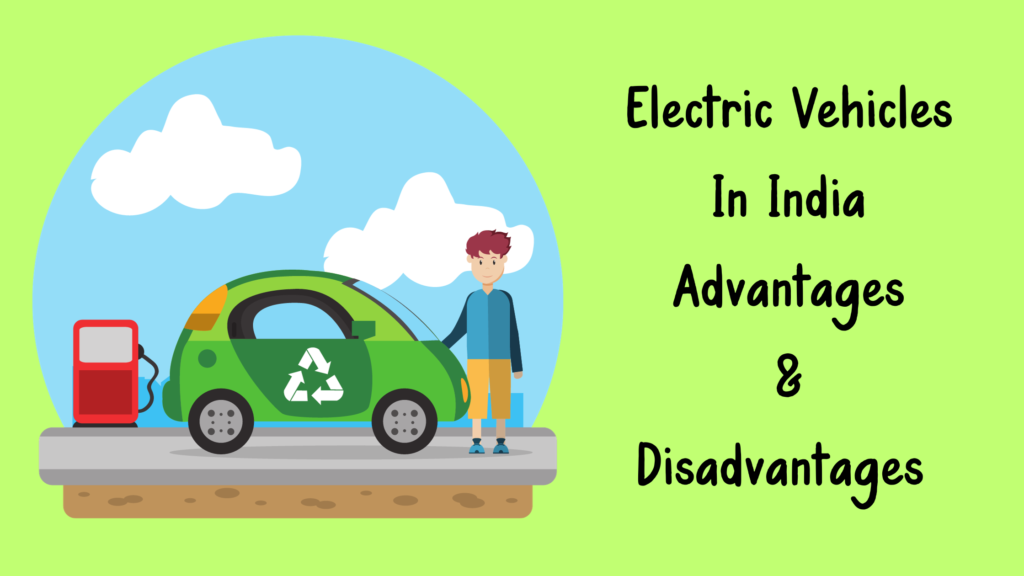
Navigating the Road to a Sustainable Future: A Comprehensive Analysis of Electric Vehicles in India
Introduction
In the face of escalating environmental concerns and the depletion of fossil fuels, India’s transportation sector stands at a critical juncture. The nation’s burgeoning population and rapidly expanding urban landscape have fueled a surge in vehicle ownership, exacerbating air pollution and contributing to climate change. In response to these pressing challenges, electric vehicles (EVs) have emerged as a beacon of hope, promising a cleaner and more sustainable future for India’s mobility needs.
Electric Vehicles in India: A Pathway to Environmental Stewardship
EVs operate emission-free, eliminating tailpipe emissions that are a major contributor to air pollution and greenhouse gas emissions. This shift towards EVs can significantly improve air quality, particularly in densely populated urban areas. The adoption of EVs aligns with India’s commitment to reducing its carbon footprint and mitigating the effects of climate change.
Unveiling the Energy Efficiency Advantage: Electric Vehicles in India
EVs are inherently more energy efficient than conventional internal combustion engine (ICE) vehicles. They convert around 77% of the electrical energy from the grid to power the wheels, compared to only 12%-30% efficiency for ICE vehicles. This remarkable energy efficiency translates to lower energy consumption and reduced reliance on imported fossil fuels. The transition to EVs can help India conserve energy resources and promote energy independence.
Economic Viability: A Compelling Factor
The affordability of EVs is a crucial factor in their widespread adoption. The cost of electricity is considerably lower than that of petrol or diesel, leading to significant savings on fuel expenses for EV owners. Additionally, EVs require less maintenance due to their simpler mechanical design, further reducing overall ownership costs. The economic viability of EVs can make them an attractive choice for consumers seeking to reduce transportation costs.
Government Initiatives: Paving the Way for EV Adoption
The Indian government has taken a proactive stance in promoting EV adoption, recognizing their potential to transform the nation’s transportation sector. A series of incentives have been implemented, including subsidies on vehicle purchases, tax benefits, and the development of charging infrastructure. These incentives aim to make EVs more affordable and accessible to consumers, accelerating the transition towards sustainable mobility.
Job Creation: Unleashing Economic Opportunities
The transition to EVs is expected to create a wave of new employment opportunities in various sectors, including manufacturing, battery production, charging infrastructure development, and maintenance services. This will boost the economy and provide job prospects for a growing workforce. The growth of the EV industry can contribute to India’s economic development and social progress.
Addressing the Challenges: Overcoming Hurdles, Disadvantages of Electric Vehicles in India
Despite their promising potential, EVs face certain challenges that need to be addressed to ensure their widespread adoption in India.
Range Anxiety: Allaying Consumer Concerns
Range anxiety, the fear of running out of charge before reaching a charging station, is a significant deterrent for potential EV buyers. The limited range of EVs compared to ICE vehicles can cause hesitation among consumers.
Expanding Charging Infrastructure: Bridging the Gap
The availability of charging infrastructure is still nascent in India, particularly in rural and semi-urban areas. This lack of adequate charging stations can hinder the widespread adoption of EVs.
Addressing Initial Vehicle Costs: Enhancing Affordability
Despite government incentives, the upfront cost of EVs is still higher than that of ICE vehicles. This price premium can be a barrier for budget-conscious consumers.
Battery Technology Advancements: Paving the Way for Progress
The performance and durability of batteries in EVs are critical factors for long-term adoption. Further advancements in battery technology are needed to address concerns about range, charging speed, and battery life.
Sustainable Electricity Generation: A Holistic Approach
The source of electricity used to charge EVs can indirectly impact environmental sustainability. If electricity is generated from fossil fuels, the overall environmental benefits of EVs may be reduced.
Conclusion: Embracing the Future of Sustainable Mobility
Electric vehicles hold immense promise for India’s transportation future, offering a cleaner, more sustainable, and energy-efficient mode of mobility. By addressing the existing challenges and capitalizing on the opportunities, India can pave the way for a future where EVs become an integral part of the country’s transportation landscape, contributing to a greener and more sustainable environment for all. The transition to EVs is not just a technological shift; it is a paradigm change towards a more sustainable and environmentally conscious future. India stands at the forefront of this transformation, poised to become a global leader in the adoption of EVs and setting a benchmark for sustainable mobility.
more about the electric vehicles https://www.zigwheels.com/electric-vehicles india

Pingback: The Revolutionary Electric Future with India's Top 5 Upcoming EV's 2024